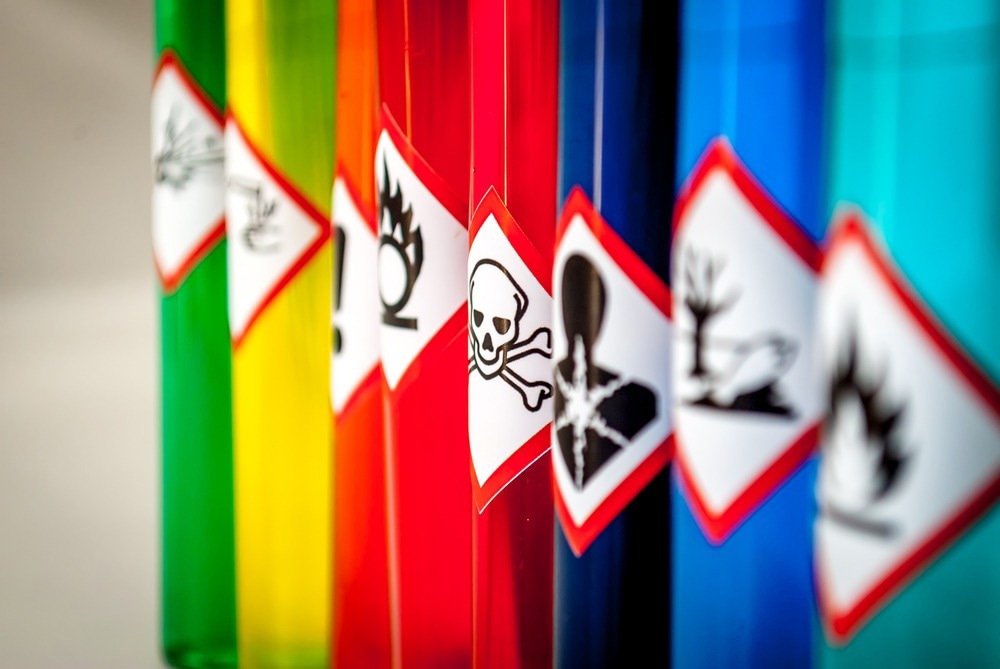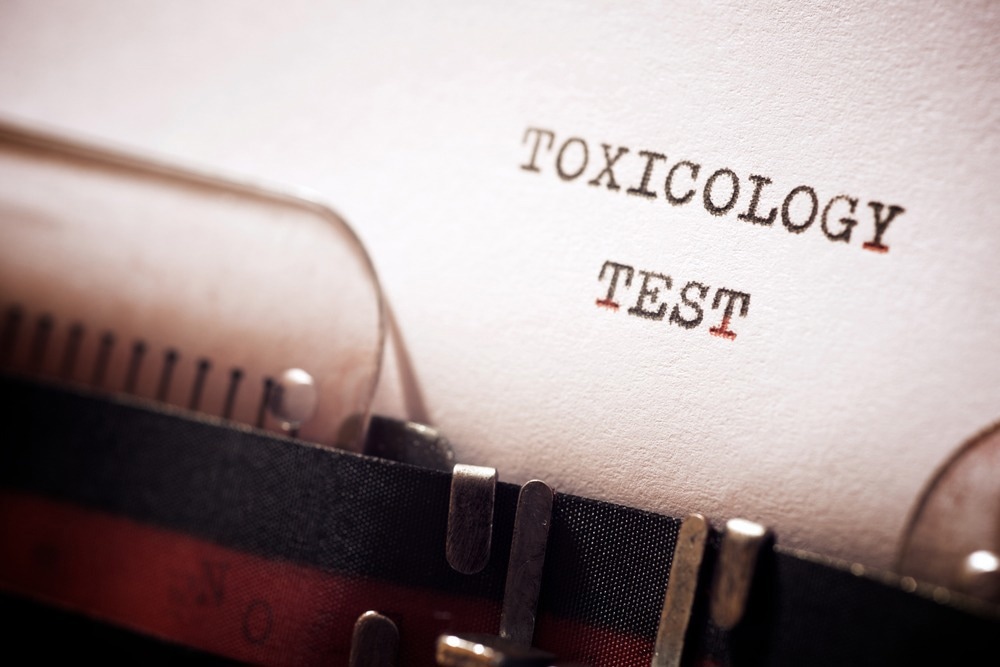Computational toxicology is the application of computer-based models and simulations to understand and predict the potential adverse effects of various compounds. It is a rapidly evolving field that offers innovative and efficient methods for evaluating the safety of chemicals in a wide range of industries.

Image Credit: Antoine2K/Shutterstock.com
Introduction to Computational Toxicology
Using animals in traditional toxicological studies is often time-consuming, expensive, and raises ethical concerns. Therefore, there is increasing pressure to utilize novel technologies.
Computational toxicology is a complementary approach that reduces the need for extensive animal testing and serves as a valuable tool in predicting the toxicity of chemicals.[1]
By borrowing from multiple disciplines – including medicine, biology, chemistry, mathematics and many others – computational toxicology uses computer-based models to manage and detect patterns and interactions in large biological and chemical data sets.
Role of Computational Toxicology in Chemical Safety Assessment
Both scientists and regulatory bodies are interested in predicting the toxicity of chemicals to make informed decisions regarding human and environmental safety. Computational toxicology plays a pivotal role in chemical safety assessment by offering rapid and cost-effective methods to screen a large number of chemicals.
Through the use of in silico models it is possible to predict the potential adverse effects of chemicals based on their structural and functional properties, thus enabling a better understanding of the potential risks associated with them.
The advances in computer-based approaches have facilitated the ability to model biological systems and develop a predictive capacity in estimating risks associated with exposure to chemicals, such as drugs and pollutants.
In some cases, in silico predictions concerning chemical safety are explicitly requested by regulations. For instance, in 2016, the REACH (registration, evaluation, authorization and restriction of chemicals) initiative in the EU passed a regulation to make non-animal testing for skin sensitization the default requirement for the regulatory assessment of chemical product safety.
Methods and Approaches in Computational Toxicology
Probably the most common approaches in computational toxicology use quantitative structure-activity relationship (QSAR) models, where an algorithm predicts the toxicity of a chemical based on the relationship between the chemical structure of a substance and its biological activity, allowing for quick assessments. QSAR is widely recognized as a valuable alternative to in vitro and in vivo experiments.[2]
Physiologically based pharmacokinetic (PBPK) models are useful tools to model the processes of chemicals in organisms. They simulate the distribution, metabolism, and excretion of chemicals within the body.
High-throughput screening (HTS) methods use in vitro assays and computational tools to rapidly assess large chemical libraries for toxicity, whereas molecular docking and dynamics simulations are widely used to provide insights into the binding affinity between chemicals and biomolecules and the potential mechanisms of toxicity.
With the advancement of artificial intelligence, machine learning techniques have also gained interest, with various machine learning methods already applied in QSAR modeling. By training algorithms on large sets of chemical and toxicity data, it is possible to identify patterns and make predictions about the toxicity of new substances.

Image Credit: WINDCOLORS/Shutterstock.com
Applications and Case Studies
“Toxicology in the 21st Century”, or Tox21, is an initiative involving the United States Environmental Protection Agency (EPA) and several other federal organizations, aiming at developing higher throughput in vitro systems and computational modeling for biological response in humans and the environment, replacing in vivo animal testing.[3]
Tox21 is the largest compound library ever constructed specifically for improving the understanding of the chemical basis of toxicity across research and regulatory domains.
Since its launch in 2008, the project has screened nearly 10,000 chemicals, including consumer products, food additives, drugs, and chemical mixtures, and generated more than 100 million data points, with all the data publicly available.
The relevant chemical samples were screened in a battery of quantitative HTS (qHTS) assays at multiple concentrations over four orders of magnitude (in contrast to single concentration as used in HTS assays for drug discovery).
The program has identified approximately 2,800 genes in cells and tissues that are useful in studying responses to toxic chemicals. Currently undergoing Phase III, Tox 21 will focus on predicting responses to toxic substances in cells and tissues.
In another example, researchers have used computational toxicology to improve the prediction of drug-induced liver injury (DILI), introducing a novel QSAR approach that incorporates the drug’s mode of action (MOA) as part of the modeling process.[4]
The authors divided the compounds (333 drugs) into data sets based on their MOA, then developed QSAR models for each group, and combined individual models to obtain an integrated MOA-DILI model.
This MOA-DILI approach has the potential to improve predictive outcomes and reveal complex relationships between MOAs and DILI, and could be used to develop DILI predictive models in drug screening.
Challenges and Future Directions
To meet the requirements of regulatory authorities, companies from various sectors are urged to report the toxicological properties (i.e., carcinogenicity, mutagenicity, reproductive toxicity) of the compounds they intend to market. Therefore, the early in silico evaluation and prediction of properties for an early safety assessment is much welcome.
However, despite the significant contributions, there are some challenges associated with computational toxicology. Like for other computational methods, the accuracy and reliability of the predictions rely on the quality and completeness of the data.
Addressing this challenge requires gathering and sharing comprehensive toxicity data and filling the gaps in the limited information available for certain chemicals.
Moreover, the complex nature of biological systems makes the accurate modeling of the interactions between chemicals and living organisms quite challenging. Thus, the development of enhanced computational models that integrate systems biology approaches is an ongoing area of research.
In conclusion, computational toxicology, with its ability to expedite the evaluation process of various compounds and reduce reliance on animal testing, has emerged as a powerful tool in the assessment of chemical safety, and it will likely play an even more significant role in ensuring the safety of chemicals as technology advances.
Sources:
- Rusyn, I. & Daston, G. P. (2010). Computational toxicology: realizing the promise of the toxicity testing in the 21st century. Environmental Health Perspectives, 118, 1047-50.10.1289/ehp.1001925. Available at: https://www.ncbi.nlm.nih.gov/pubmed/20483702
- Tang, W., et al. (2024). Computational Nanotoxicology Models for Environmental Risk Assessment of Engineered Nanomaterials. Nanomaterials (Basel). doi.org/14.10.3390/nano14020155.
- Richard, A. M., et al. (2021). The Tox21 10K Compound Library: Collaborative Chemistry Advancing Toxicology. Chemical Research in Toxicology, 34, pp. 189-216. doi.org/10.1021/acs.chemrestox.0c00264
- Wu, L., et al. (2017). Integrating Drug’s Mode of Action into Quantitative Structure–Activity Relationships for Improved Prediction of Drug-Induced Liver Injury. Journal of Chemical Information and Modeling, 57, pp. 1000-1006. doi.org/10.1021/acs.jcim.6b00719
Further Reading
Last Updated: Feb 15, 2024